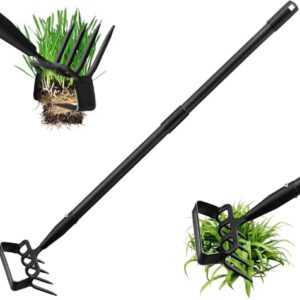When it comes to gardening, one of the most rewarding experiences is watching your plants grow and thrive. And what better way to do that than by propagating your own plants? Whether you are a seasoned gardener looking to expand your garden or a beginner wanting to try your hand at plant propagation, this guide is for you.
Plant propagation is the process of creating new plants from existing ones. There are several methods of plant propagation, but two of the most common ones are from cuttings and seeds. In this guide, we will focus on these two methods and provide you with step-by-step instructions on how to successfully propagate your own plants.
Let’s start with plant propagation from cuttings. This method involves taking a piece of a plant (usually a stem or a leaf) and encouraging it to grow roots and develop into a new plant. Here are the steps to propagate your plants from cuttings:
Step 1: Choose the right plant. Not all plants can be propagated from cuttings, so it is important to do some research beforehand. Generally, plants with soft, pliable stems are the best candidates for propagation from cuttings.
Step 2: Prepare your cutting. Using a clean, sharp pair of scissors or pruning shears, take a cutting from the plant you have chosen. Make sure the cutting is at least a few inches long and has several leaves on it. Remove any flowers or flower buds from the cutting.
Step 3: Dip the cutting in rooting hormone. Rooting hormone is a substance that helps stimulate root growth in the cutting. Dip the bottom end of the cutting in rooting hormone and tap off any excess.
Step 4: Plant the cutting. Fill a small pot with a well-draining potting mix and make a hole in the center. Insert the cutting into the hole and gently press the soil around it to secure it in place.
Step 5: Water the cutting. After planting the cutting, water it thoroughly to help settle the soil and encourage root growth. Place the pot in a warm, sunny spot but out of direct sunlight.
Step 6: Monitor the cutting. Check the cutting regularly for signs of growth, such as new leaves or roots. Keep the soil moist but not waterlogged, and mist the cutting occasionally to maintain humidity.
With proper care and attention, your cutting should develop roots and eventually grow into a new plant. Plant propagation from cuttings can be a fun and rewarding way to expand your garden and share your plants with others.
Next, let’s talk about plant propagation from seeds. While cuttings are a more direct way to propagate plants, seeds offer a wider variety of plants to choose from and can be a fun and rewarding process. Here are the steps to propagate your plants from seeds:
Step 1: Choose the right seeds. When selecting seeds for propagation, make sure to choose high-quality seeds from a reputable source. Consider factors such as the plant’s growing requirements, maturity, and growth habits.
Step 2: Prepare your seeds. Some seeds may require special treatment before planting, such as soaking, scarification (scratching the seed coat), or stratification (exposing the seeds to cold temperatures). Follow the instructions on the seed packet or do some research on the specific requirements of the seeds you are propagating.
Step 3: Plant the seeds. Fill a small pot or seed tray with a well-draining potting mix and plant the seeds according to the instructions on the seed packet. Cover the seeds lightly with soil and water them gently.
Step 4: Provide the right conditions. Place the pots or seed trays in a warm, sunny spot but out of direct sunlight. Keep the soil moist but not waterlogged, and monitor the seeds for signs of germination.
Step 5: Transplant the seedlings. Once the seedlings have developed true leaves and are strong enough to handle, transplant them into larger pots or the garden. Be gentle when handling the seedlings to avoid damaging their roots.
Step 6: Continue to care for the plants. Water the seedlings regularly, provide them with adequate sunlight, and fertilize them as needed. As the plants grow, monitor them for pests and diseases and take appropriate measures to protect them.
Propagating plants from seeds can be a fun and rewarding experience, as you watch your seeds grow into healthy, mature plants. Experiment with different types of seeds and learn from your successes and failures to improve your skills as a gardener.
In conclusion, plant propagation is a valuable skill that every gardener should learn. Whether you choose to propagate your plants from cuttings or seeds, the process can be a rewarding way to expand your garden, share your plants with others, and deepen your connection to nature. So grab your pruners, seeds, and potting mix, and get ready to propagate your own plants!






